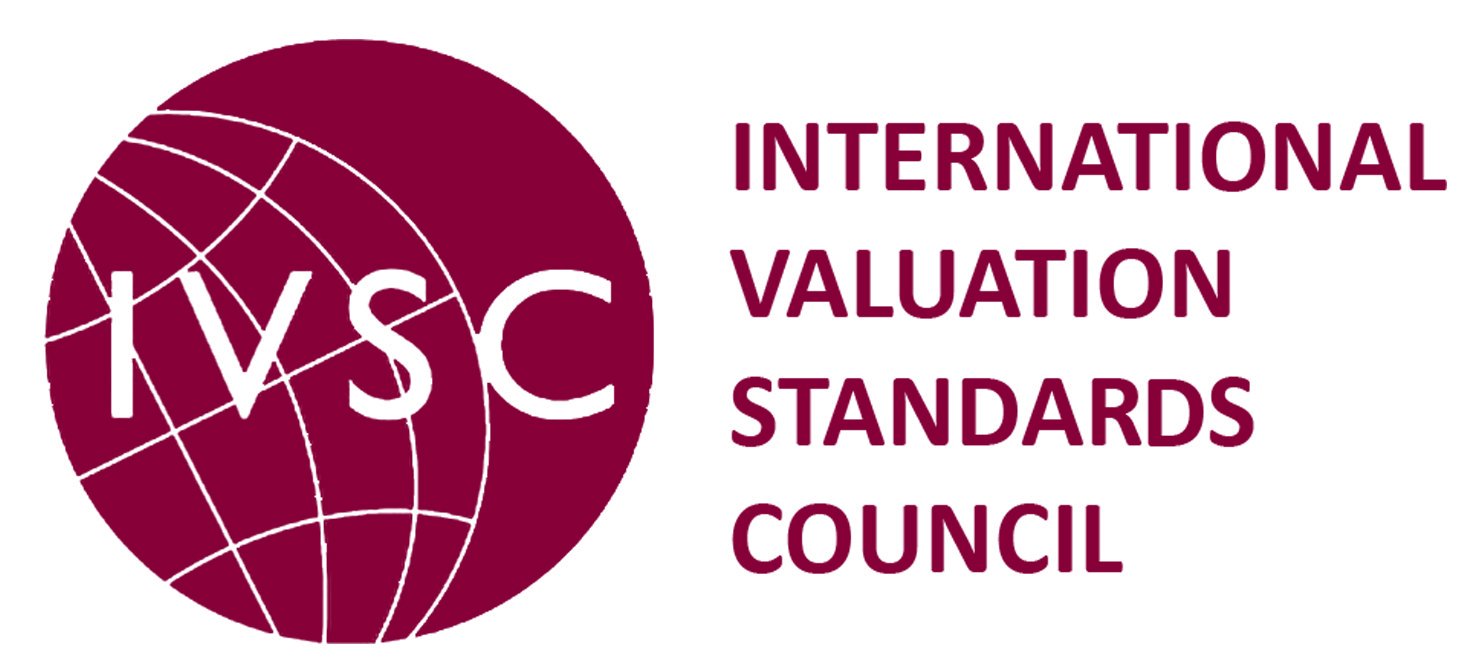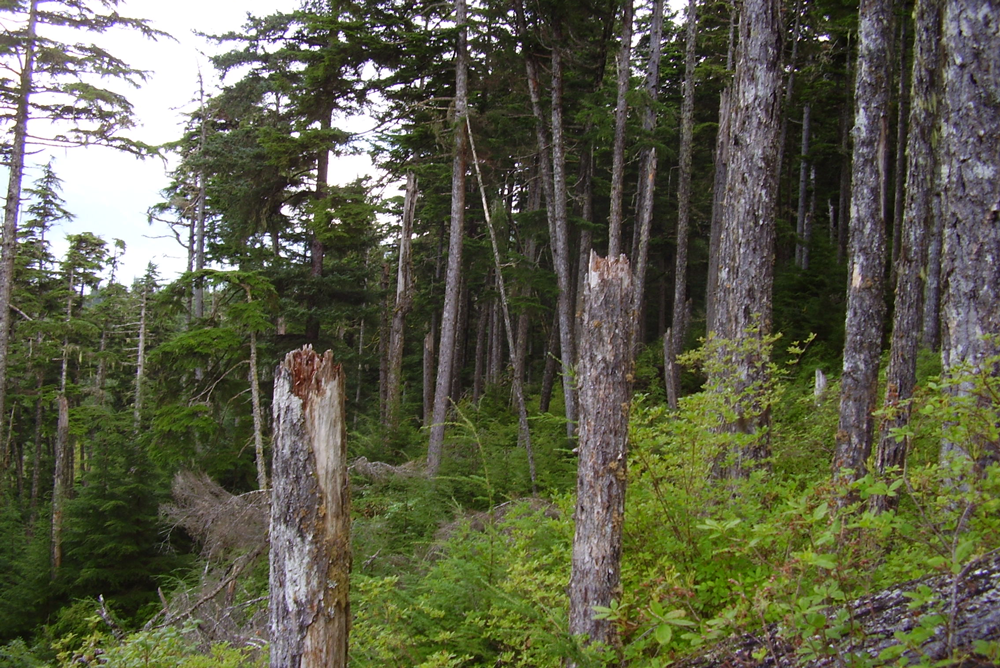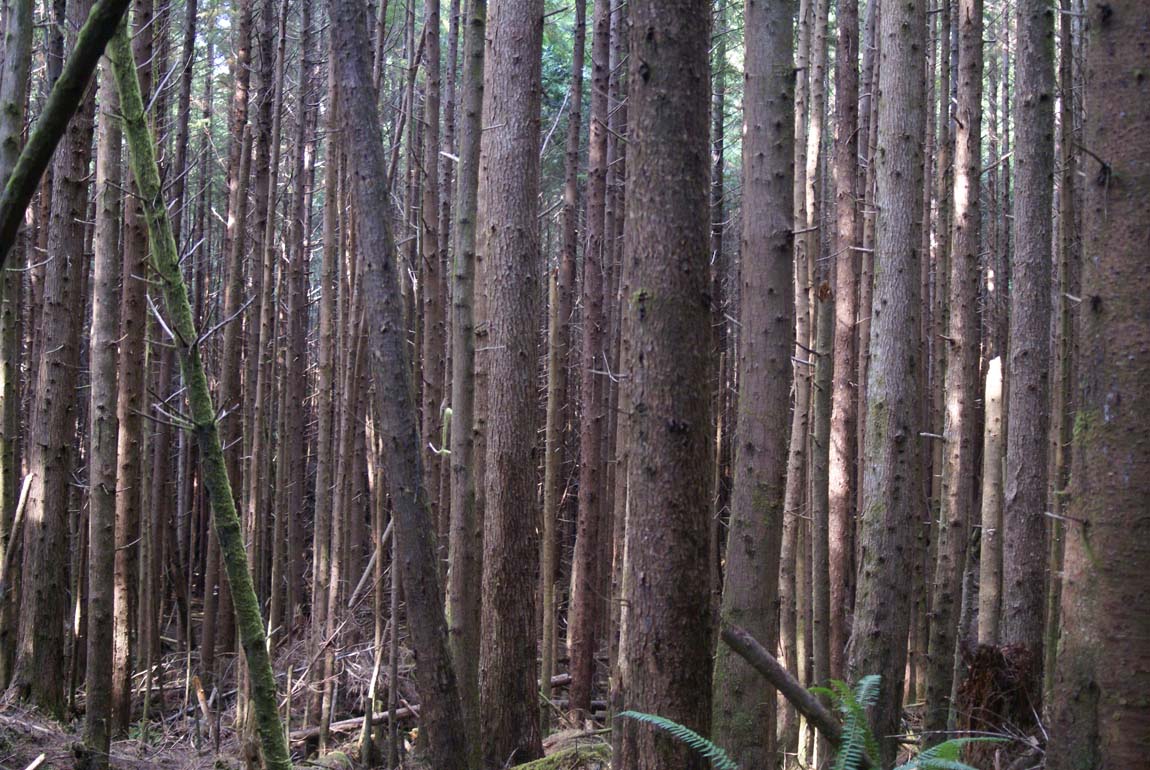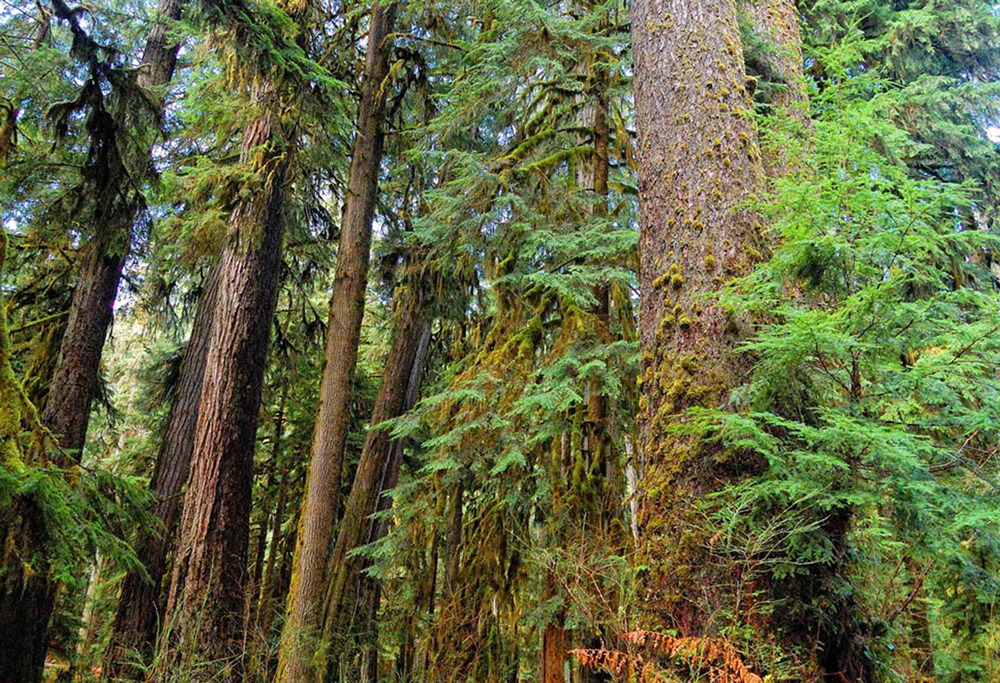Uniform Standards of Professional Appraisal Practice (USPAP) is the quality control standard applicable for real property, personal property, intangible assets, and business valuation appraisal analysis and reports. USPAP Forestland Appraisals are guided by this process of determining asset value. The standard applied in the United States and its territories gives users the ability to compare asset values across the country. When applied to forestland property valuation, this applies the Income Capitalization Approach to determine property value. These standards are applied around the world. The Appraisal Foundation administers this standard in the United States.
The International Valuation Standards Council (IVSC), establishes the global standard for USPAP Forestland valuation practice and the valuation profession internationally. The International Valuation Standards Council and The Appraisal Foundation have established a ‘cross-walk’ to bridge practices of the USPAP Forestland valuation approach. Land parcel valuation presents a substantial challenge to administer, especially including unique conditions found on forestlands. The Bridge from USPAP to IVS is provided by IVS.
The uniqueness of forestlands comes partially because of extremely long time horizons involved with income generating events: decades, not months. USPAP Forestland appraisals also challenge traditional methods because of the high degree of production-factor randomness. The FRASS Platform applies these factors and aligns them to achieve accuracy and rapid delivery.
This is where professionals discover asset value for their forestland investments.
Appraising Forestland Value: Income Capitalization, USPAP Standards, and FRASS Optimization
USPAP Standards
USPAP Forestland Appraisals take front-stage for consideration of value. In the United States, Appraisers are granted license to appraise assets by the states they operate in. Licensure is granted after successful completion of testing and time spent appraising assets, under guidance of a senior Licensed Appraiser. Appraisal guidance concerning USPAP Forestland Appraisals, give recommendations to follow the listed guidelines – a guidance applied to all directives. Similarly, USPAP Forestland appraisals are unique, stemming from four categories of asset value generally associated with each property considered.
Consideration can include:
- Depreciable Real property Improvements (DRPI),
- Equipment,
- Land,
- Timber.
Disclosure
As I write this portion of the Forest Econometrics web domain, I feel the need to disclose to readers my background. I am a Doctor of Natural Resource Economics, a Professional Forester, and Land Use Planner. I am NOT a Licensed Appraiser, although I have consulted Licensed Appraisers for forestland properties. In my view, a lot of professional appraisal work is footed firmly in the science of economics. However, I have witnessed practitioners missing application of fundamental economic growth & decay principles. I offer opinions of how forestry appraisal tasks can be streamlined and improved, while implementing USPAP Forestland Appraisal standards.
Highest and Best Use Analysis
Forestland properties are dedicated to growing trees that will ultimately generate income. The income may come as timber is harvested. Some forestland properties are dedicated to growing trees. Many forestlands, dedicated to tree growing trees or producing municipal water, may include:
- roads,
- culverts,
- bridges,
- culverts,
- a simple structure, and
- even some equipment associated with the property.
Each asset should be included as separate values when assessing the property’s value under guidance of USPAP Forestland appraisals. When the ‘new’ owner establishes tax records moving accounts forward, these values establish their ‘initial basis’ for taxation purposes.
USPAP Forestland appraisals guide all attempts to place value on properties to address the Highest and Best Use (HBU) issue. Property HBU is the reasonable, probable and legal use of the land. HBU must be physically possible, appropriately supported, financially feasible. This may include value determination of a property to grow and harvest timber. However, it might be to use the property as a housing development site. On the other hand, it might be using the property as a community watershed. Other considerations might look at just about any other use possible on the site. Many options are dismissed out of hand, because they are not justified based on current conditions. On the other hand, some alternatives are competitively assessed to determine what the HBU values are. The highest valued alternative is the HBU value to place on the property: regardless of what the buyer may use the property for.
Depreciable Real Property Improvements
Depreciable Real property Improvements: These items are physical improvements to the land that have a useful life and are depreciable in their nature. It includes items such as fences, buildings, culverts and even some roads. The critical part of these assets is that value in these accounts is depreciated each year as the asset is worn out in the production of income. Some forestland parcels do not include any “DRPI”.
Equipment
Equipment: When dealing with equipment, the Fair Market Value (FMV) is generally a reasonable estimation of market value as it exists on the day of sale. Think of this as a “blue book” price on a used automobile. It can be the “going rate” or appraised value of equipment on the date of acquisition.
Often, money lenders will discourage mingling of used equipment with land when borrowing money for long periods of time. I urge Assessors to think about the land-loan with a term of 10 or 20 years. Think about this, “will the equipment still be generating income in 20 years?” Most likely, it will rapidly exhaust, but the borrower will still be paying the principal they borrowed. Our recommendation is to separate equipment from the land-loan activity and pay for it as a different transaction.
For taxation purposes, the combination is alright as establishment of the property’s basis is established. Separate them for the initial loan of money and the establishment of the land appraisal.
Land
Land: Determining land value can be challenging or straightforward, depending on its characteristics. Therefore, when we determine the Fair Market Value (FMV) of land we must consider what use determines the Highest and Best Use (HBU). Much of the land in the temperate forest climate region is well suited to growing timber. However, communities continue to grow and expand into the forested areas of the countryside. The highest and best use of forestlands often is not to grow timber. Eventually, land has been subdivided and sold as housing lots. The purchaser must determine the HBU of the land and apply that value as the FMV.
Timber production gives the unique challenges to determining land values when applying USPAP Forestland Appraisal techniques. This is because timber production’s revenue generating abilities give value to the land. Lands that grow trees bigger, faster, and with low extraction expenses are worth more money. Simply put, that makes the land more valuable. It is the return on investment for the landowner. In the USPAP Forestland Appraisal arena, this makes value.
Timber
Timber: Timber value is based on both current and future potential timber production. First, Appraisers need to determine the volume of timber on the site as of the date of acquisition. The next item is to determine the value of the timber at the time of acquisition. This should be the value the landowner would net from the proceeds of selling the timber less all expenses of harvest such as logging, trucking, and consulting forester fees.
However, this {volume x net value} consideration is not the end of the exercise. Next, consider a 50-year-old timber stand, located in Western Washington. Timber on the site may be marginally qualified as pulp logs right now. It may generate only about enough to pay for logging, trucking, and reforestation expenses. But, if the landowner holds the growing timber for 15 more years, the value skyrockets upward as 4-sawlog, 3-sawlog, and even 2-sawlog timber could be harvested. Through time, each timber stand’s high-grade-intensity increases and the value of the asset grows.
Astute Investors
Astute investors consider future value as a discounted Net Present Value (NPV) of the future timber sale revenues. This NPV condition can make the property a solid investment and that is the amount to appraise the standing timber on the property. USPAP Forestland Appraisals apply these techniques to find meaningful value assessments.
Almost there. Next, each timber stand is virtually grown forward in time to find its highest potential value scenario, considered in NPV terms. This procedure discovers
- Discounted NPV of the current rotation as it grows forward in time,
- growth determines financially optimal harvest timing,
- harvest dates are determined in concert with the value of the next rotations value,
- the next rotation cannot be planted until the current one is harvested.
- The next rotation grows and is harvested at its financial optimum,
- harvest dates are determined in concert with the value of the subsequent rotation.
- All timber rotations into perpetuity, considered at each potential rotation length.
FRASS algorithms make all possible combinations of timber rotation lengths through the current, the next, then all timber rotations into perpetuity. By implementing this approach, discovery of the highest discounted present value is found through all future harvest timing combinations. Finally, this determines the true value of timber on the property. Without this intensive analysis, forestland valuation is worthless.
This is the Income Capitalization Approach as it is correctly applied to forestlands.
USPAP Forestland Appraisers must assemble all these factors for each timber stand. These are combined for the subject parcel, and reported as the Income Capitalization Approach to timberland value. There are two other options available to Forestland Appraisers when submitting an asset value: Cost Approach, and Sales Comparison Approach.
From our perspective, these alternatives fail to assess a meaningful value of forestlands. Why? Read on.
Valuation Methods
The Appraisal Institute, through the Uniform Standards of Professional Appraisal Practice (USPAP Forestland Appraisals), has established ‘recommendations’ of how asset value is established when making an Appraisal Report.
- Cost Approach
- To derive the value of the merchantable timber by this approach, delivered log “gate” prices, current on the date of appraisal, are obtained in the same market area for the same species and quality as the subject timber.
- Sales Comparison Approach
- This is used to estimate the value of the subject property based on an analysis of comparable land sales taken as a whole.
- Income Capitalization Approach
- This is predicated on the assumption that a definite relationship exists between the amount of income a property can earn and its value.
Each approach is different in its aspect and derives value from different conditions. Appraisers will often do two or all three Approaches. Oftentimes, they then create an average, or weighted average of all three derived values. Each Appraiser uses their personal strategies to determine what the value of the property really is. It is difficult, but when looking into forestland assets, one of these approaches is superior to the rest. Continue reading to see why the Income Capitalization Approach is superior when developing a USPAP Forestland Appraisal.
The Cost Approach
Licensed Appraisers using the USPAP Forestland approach apply the Cost Approach by liquidating standing timber on the date of assessment. This gives value for only the current value of the timber on the land. It does not consider the costs of reforestation or maintenance of the newly planted trees. Although some Licensed Appraisers will use this value, it fails to put value on future revenue generation potential. The potential of the site to grow future timber rotations will generate profit for the landowner.
Furthermore, some forestlands are better suited to grow timber as compared to other sites. There is a striking and obvious difference in the parcel’s value eclipsing the current harvested timber’s value. Therefore, the Cost Approach approach fails to financially recognize differences in productivity as being a factor of value.
The Cost Approach does not consider forest site productivity value or future productivity evidenced by growing trees.
Sales Comparison Approach
Sales Comparison Approach is often used by Licensed Appraisers but has been grossly misapplied to forestlands when executed as USPAP Forestland Appraisals. Misapplication is made when an observer considers this approach’s fundamental basis. Similar properties based on location and size, are generally found to assign the price that was paid. The previously sold property may have housed more productive lands of different ages than the subject property. Therefore, when the other property’s attributes are applied to the subject property’s value, they are erroneous.
When USPAP Forestland Appraisals use this approach, the Appraiser must consider how the forestland properties differ. Characteristics such as
- soil productivity,
- timber stand ages,
- tree species,
- regulatory constraints,
- riparian zones,
- TSE habitat restrictions,
- slope,
- road access.
Each of these characteristics affect parcel value. These characteristics build, one on the other, to make comparisons problematic. Unfortunately, they are still adjusted haphazardly by some attempting to pull values from nearby properties.
In 40 years as a Professional Forester, I have never witnessed any two forestland properties that were identical. More to the point, time and the macroeconomy are factors that cannot be swiped away. Making price adjustments based on these differences can yield only ‘judgement values’.
We can do better than this.
Income Capitalization Approach
The Income Capitalization Approach, applied to forestlands, is based on the assumption that there exists a definite relationship between:
- amount of income a property can earn,
- timing of income events as discounted to NPV,
- timing of costs needed to generate those income events, discounted to NPV,
- its ultimate value.
This is more difficult for the Forestland Appraiser to determine, but it generates the actual value of the asset in question. Therefore, this process is the golden fleece of USPAP Forestland Appraisal methods.
Stratification Matters
Readers of this web domain have seen the approach of segregating parcels into timber stands with roads, bridges, culverts, riparian zones, and wildlife habitat. Hauling distances from each timber stand place costs from the transportation of logs from the site to the ultimate buyers of logs, generally lumber mills. When each timber stand is processed through Forest Biometric Growth & Yield analyses, we generate actionable information. We can measure timber characteristics to express them as commodities: these have prices and costs. Therefore, the values can be expressed and applied precisely.
Finally, these factors are melded into future market expectations of commodity value – determined one log at a time. This is where we put 21st Century technology to task. Millions of calculations are made for each tree, timber stand, and parcel to generate the USPAP Forestland Appraisal Report.
The GIS work involved can be extensive and used for daily management purposes. GIS data can be fundamentally basic to describe location, property boundaries, stream and road locations. Maps can give a feeling of ‘place’ useful for the Forestland Appraisal event. In the FRASS Platform, GIS maps are representations of data.
When the USPAP Forestland Appraisal Report is minted, the Licensed Appraiser will document findings. These findings are put forward to aid clients, buyers and sellers, loan officers, and peers of the analysis made. The asset values assigned should be defensible, repeatable, and understandable by everyone.
Make FRASS a part of your Appraisal

Click here to progress to the next level. You will like what happens next.






